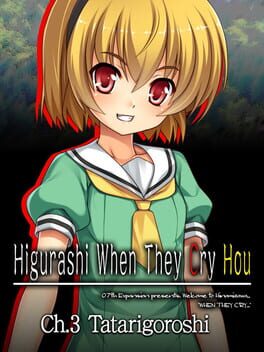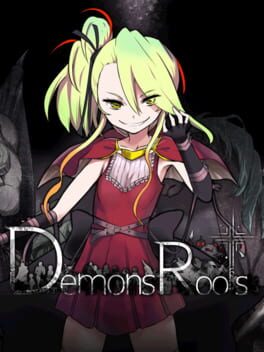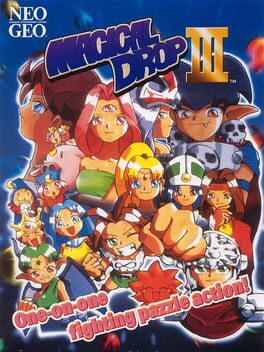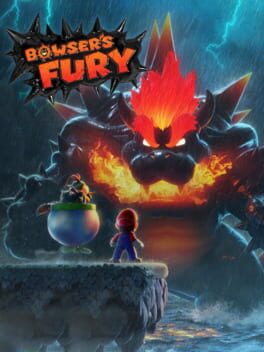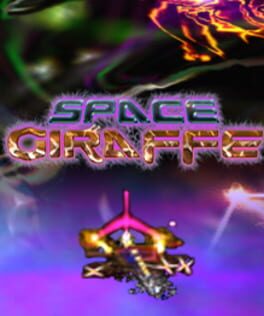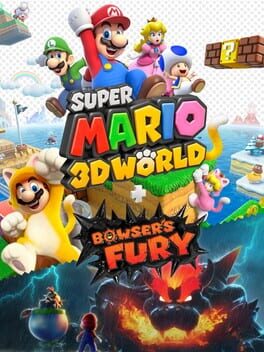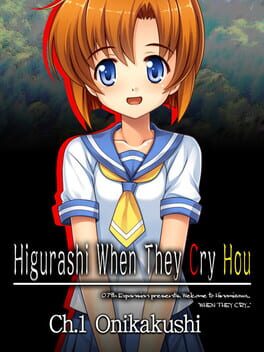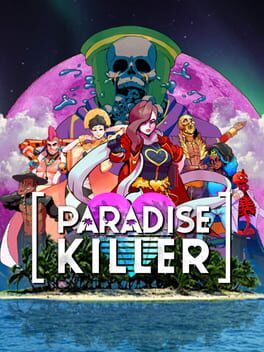megahouten
334 Reviews liked by megahouten
Pizza Tower
2023
ActRaiser
1990
So, you're God. No work-arounds, you're simply God, and you take care of your people and your creation. People go to the temple to revere you and give you offerings that help you. People's faith strengthens you.
At the end of the game, once you're finished with your work and have defeated evil, people stop visiting temples. Why? Because they don't need you anymore. The game reveals itself as a bitter allegory of people's relationship with religion, a very common theme in Quintet's games in the 90s.
ActRaiser utilizes God simulation mechanics to make the player a direct participant in creation to form a bond to the people that have faith in you and make the finale more resonant.
At the end of the game, once you're finished with your work and have defeated evil, people stop visiting temples. Why? Because they don't need you anymore. The game reveals itself as a bitter allegory of people's relationship with religion, a very common theme in Quintet's games in the 90s.
ActRaiser utilizes God simulation mechanics to make the player a direct participant in creation to form a bond to the people that have faith in you and make the finale more resonant.
Hi-Fi Rush
2023
I cannot break the gameplay in fun ways like a badly made sonic game or a very exploitable game; it doesnt give me the challenge of a 3D Ninja Gaiden for example, where level and enemy design are different puzzles of situations you have to solve with the tools at your disposal, just press the jump button to go to a platform, press the assist button to activate a platform, press the hook button to go somewhere, filler, classic 7th gen games filler; it doesnt have a freedom of gameplay ramifications like a Sunset Overdrive or InFamous where i choose what to upgrade, what missions i do or what weapons and scenery i use to tackle fights. and nor it has the slightless DMC or whatever depth in the combat system, no cancels, every attack has massive areas, enemy and playable character alike, also the beat system makes timmings much more simplistic and removes complex button presses.
I have died in this game mainly because i didnt have the patience to dodge hoping I would hit faster to be done with fights sooner.
For the non gameplay part: characters, storytelling and all that, while very well executed, i cannot see the sightless hint of originality, i have already seen this story, this protagonist, these different characters, every new personallty just tells me how proud they are to be cliche, and every potential plothole or whatever is solved by classic "haha this game is goofy remember?" almost 4th wall type of shit.
Nevertheless, im rooting for more game to come out like this, experiences that grab your money once and never ask you again, thank you
I have died in this game mainly because i didnt have the patience to dodge hoping I would hit faster to be done with fights sooner.
For the non gameplay part: characters, storytelling and all that, while very well executed, i cannot see the sightless hint of originality, i have already seen this story, this protagonist, these different characters, every new personallty just tells me how proud they are to be cliche, and every potential plothole or whatever is solved by classic "haha this game is goofy remember?" almost 4th wall type of shit.
Nevertheless, im rooting for more game to come out like this, experiences that grab your money once and never ask you again, thank you
Proteus
2013
Maybe it's just my personal associations with the pixelated view of a world full of nature and my memories of the indie scene at the time, but the first impression of Proteus is reminiscent of Minecraft. Where the world importance comes from its elements and not their particular arrangement, capable of being procedurally generated, making each particular world unique and common at the same time. The major difference, all your world changing actions are taken away. What is left is one of the most important aspects in any game, and in life, to observe. Navigating through a hypersensitive world, since observation and perception are the sole focus, everything seems to carry some life.
Observing how the world changes and how perception changes the world. Getting atop a mountain when the rain comes to see the sky again, to know what time it is, look down again to see that the land has turned into the sea, descend into it and watch how the sky is now the sea. To find comfort upon finding that this world has a moon when the night comes too. Try to find a pattern in the stars, look at the land and see that the lights are mirrored below. Discover that, same as everywhere, magic appears at night.
One of the most important moments is to stand still and observe what's out of reach. How the clouds move, how the sun goes down and how the moon rises on the opposite side. Everything is the life of nature, except for the human tombstones. Because it's about opposites too. To appear on the sea facing the land where to spend the rest of your time. To do anything but escape the cycle of day and night and then seasons and then life.
If Proteus is about life, and life is about observing, the game, of course, can only end in one way. An eye getting closed.
Observing how the world changes and how perception changes the world. Getting atop a mountain when the rain comes to see the sky again, to know what time it is, look down again to see that the land has turned into the sea, descend into it and watch how the sky is now the sea. To find comfort upon finding that this world has a moon when the night comes too. Try to find a pattern in the stars, look at the land and see that the lights are mirrored below. Discover that, same as everywhere, magic appears at night.
One of the most important moments is to stand still and observe what's out of reach. How the clouds move, how the sun goes down and how the moon rises on the opposite side. Everything is the life of nature, except for the human tombstones. Because it's about opposites too. To appear on the sea facing the land where to spend the rest of your time. To do anything but escape the cycle of day and night and then seasons and then life.
If Proteus is about life, and life is about observing, the game, of course, can only end in one way. An eye getting closed.
Demons Roots
2021
Magical Drop III
1997
Desert Golfing
2014
En videojuegos, el golf funciona. Se trata de la incertidumbre del cálculo, esos segundos de leyes físicas generando consecuencias en cadena mientras esperamos un resultado favorable. Todo lo bueno de apostar sin nada de lo malo, con el aliciente de que aquí sí tenemos el control pues el resultado es consecuencia directa de nuestro desempeño. Que a nadie extrañe el éxito de Angry Birds, otra versión del golf videojueguil camuflada con tirachinas, pajarracos y muchos bloques.
Pero la forma más afilada de golf en videojuegos, al menos hasta la fecha, es Desert Golfing. Deslizar el dedo para trazar una línea en pantalla que traduzca, en nuestra cabeza, los futuros arcos y rebotes resultantes a través de inclinaciones varias. Dibujar la línea, soltar, y a continuación comprobar si hemos acertado. Hacer matemáticas con el dedo. Nada más (y nada menos).
Los videojuegos han avanzado tanto en el tiempo, se han llenado de tanta parafernalia (historias, sistemas de progresión, niveles, puntos, caminos, música, power-ups...) y ponen tanto músculo y esfuerzo en su presentación que, a su lado, Desert Golfing es una anomalía. No es solo su sencillez, sino el completo compromiso con su filosofía. En él, solo lo fundamental permanece: ni niveles, ni puntos, ni historia, ni power-ups, ni música y ni tan siquiera figuración alguna, o casi. Solamente la bola, el hoyo, la angulada orografía y un número (su única abstracción) en la parte superior de la pantalla: nuestros disparos. No es golf, sino golfing. No el deporte, sino lo esencial de él: el cálculo, su incertidumbre, las leyes de la física sucediendo y nuestros errores acumulándose. Ese dichoso numerito, la constatación de nuestra falibilidad, siempre arriba para recordárnosla. El título es tan puro que ni la competición se permite. Al fin y al cabo, ¿qué es la competición sino un accesorio, una mentira para dar emoción al acto? Nada, en Desert Golfing no hay cabida para accesorios ni mentiras.
Los videojuegos son un conjunto de mentiras, y nosotros les pedimos que las cuenten bien para así creérnoslas. Es lo que llamamos inmersión. Desert Golfing, en cambio, opta por el otro lado. El lado de no ser un videojuego de mentiras, sino de verdad. Una verdad, el golfing. Y ello lo convierte en una de las propuestas de diseño más radicales de su década.
Pero la forma más afilada de golf en videojuegos, al menos hasta la fecha, es Desert Golfing. Deslizar el dedo para trazar una línea en pantalla que traduzca, en nuestra cabeza, los futuros arcos y rebotes resultantes a través de inclinaciones varias. Dibujar la línea, soltar, y a continuación comprobar si hemos acertado. Hacer matemáticas con el dedo. Nada más (y nada menos).
Los videojuegos han avanzado tanto en el tiempo, se han llenado de tanta parafernalia (historias, sistemas de progresión, niveles, puntos, caminos, música, power-ups...) y ponen tanto músculo y esfuerzo en su presentación que, a su lado, Desert Golfing es una anomalía. No es solo su sencillez, sino el completo compromiso con su filosofía. En él, solo lo fundamental permanece: ni niveles, ni puntos, ni historia, ni power-ups, ni música y ni tan siquiera figuración alguna, o casi. Solamente la bola, el hoyo, la angulada orografía y un número (su única abstracción) en la parte superior de la pantalla: nuestros disparos. No es golf, sino golfing. No el deporte, sino lo esencial de él: el cálculo, su incertidumbre, las leyes de la física sucediendo y nuestros errores acumulándose. Ese dichoso numerito, la constatación de nuestra falibilidad, siempre arriba para recordárnosla. El título es tan puro que ni la competición se permite. Al fin y al cabo, ¿qué es la competición sino un accesorio, una mentira para dar emoción al acto? Nada, en Desert Golfing no hay cabida para accesorios ni mentiras.
Los videojuegos son un conjunto de mentiras, y nosotros les pedimos que las cuenten bien para así creérnoslas. Es lo que llamamos inmersión. Desert Golfing, en cambio, opta por el otro lado. El lado de no ser un videojuego de mentiras, sino de verdad. Una verdad, el golfing. Y ello lo convierte en una de las propuestas de diseño más radicales de su década.
Pizza Tower
2023
This is the one boys.
Faster than Sonic and even if you fuck it up and have to slow down, the animations and situations are funny enough to not make you mad. It's also crazier and has way better moment to moment gameplay than Wario 4. It even has good bosses!
I have been thinking about triple A platformers design philosophies (mostly Nintendo games, Sonic and not much else) and in regards to Pizza Tower, they tend to conform to very specific design norms. Which is to say that there is a kind of not written obligation to have strict difficulty progressions, prioritizing stuff that tends to be alien to those games cores. For example, in Sonic games the first levels tend to be the funniest while the latter ones usually bloat themselves with ideas that conform to what latter levels in a platforming video game should look like instead of what Sonic is at its core.
Well, Pizza Tower has none of those problems. Everything that happens, everything that Peppino does, is true to its own insanity. When you finish the game you are left wondering if everything that occurred in it was a delusional dream of a madman instead of a well choreographed video game. Maybe because the key to good video games has more to do with live giving madness than with boring to death design templates.
Faster than Sonic and even if you fuck it up and have to slow down, the animations and situations are funny enough to not make you mad. It's also crazier and has way better moment to moment gameplay than Wario 4. It even has good bosses!
I have been thinking about triple A platformers design philosophies (mostly Nintendo games, Sonic and not much else) and in regards to Pizza Tower, they tend to conform to very specific design norms. Which is to say that there is a kind of not written obligation to have strict difficulty progressions, prioritizing stuff that tends to be alien to those games cores. For example, in Sonic games the first levels tend to be the funniest while the latter ones usually bloat themselves with ideas that conform to what latter levels in a platforming video game should look like instead of what Sonic is at its core.
Well, Pizza Tower has none of those problems. Everything that happens, everything that Peppino does, is true to its own insanity. When you finish the game you are left wondering if everything that occurred in it was a delusional dream of a madman instead of a well choreographed video game. Maybe because the key to good video games has more to do with live giving madness than with boring to death design templates.
Pizza Tower
2023
-With the nerves to the limit, but with a smooth movement, justified by the style of animation. I don't know, I see it as a bit contradictory to the crazy and animated world that the game poses
-I haven't played any Wario Land, but here the approach of the double level design (hit and run) in communion with the two possible forms of mobility, until the two collide with each other, is super interesting.
but, there is the problem, that they collide in what I intuit is an impossibility to get rid of their formative references in terms of a "genre", called "the platformers".
The idea of scoring through collecting and other chores at levels that force you to fluctuate between jumping, speed and momentum does not seem very appropriate to me if at the least I fail I have to repeat a sequence of three heights and four platforms, for very funny and schizophrenic that are the crash and fall animations.
Between the seams of the game, a speerun logic almost appears?
I don't see the great Peppino spaghetti being an avatar of total control in chaos, rather I see him suffering from chaos, heck, that's how the protagonist seems to be presented, as someone on the verge of sanity, breaking with everything he knows. crosses.
-So vacuously it has been possible to attribute to Signalis that its structure is a mixture without substance (partially correct, but I don't see it badly for a game whose one of its main reasons is "memory" as a concept) beyond the visual, I think this could perfectly apply to Pizza Tower: the weight, the speed and the alleys and unthinkable traps of Sonic with the framework of Wario Land? (I intuit, I reiterate that I have not played)
But I find another similarity with Sonic: the divergence between character concept and game concept.
you already know
Speed vs Caution in Sonic
Chaos and humor vs Control and some precision in Pizza Tower
Am I the only one who feels this?
-The mixture is quite satisfactory, but why would that be enough?
-usually the internal coherences matter very little to me, and I hate applying the operational sense of the real world, I prefer the expression and the personality, at any cost. but here I find the expression in the same way as some contemporary games that rely entirely on the animations of their characters. And that's not bad at all, it's completely fine but I didn't find a situation where the comedy came from the game design instead of the characters and their animations. It's a bit picky, but I feel the same way I do when I watch one of the new Pixar-like CGI animated movies, with little interest in cinematography and space-time relationships.
I love the energy of this game, but at the same time it leaves me super cold
-I haven't played any Wario Land, but here the approach of the double level design (hit and run) in communion with the two possible forms of mobility, until the two collide with each other, is super interesting.
but, there is the problem, that they collide in what I intuit is an impossibility to get rid of their formative references in terms of a "genre", called "the platformers".
The idea of scoring through collecting and other chores at levels that force you to fluctuate between jumping, speed and momentum does not seem very appropriate to me if at the least I fail I have to repeat a sequence of three heights and four platforms, for very funny and schizophrenic that are the crash and fall animations.
Between the seams of the game, a speerun logic almost appears?
I don't see the great Peppino spaghetti being an avatar of total control in chaos, rather I see him suffering from chaos, heck, that's how the protagonist seems to be presented, as someone on the verge of sanity, breaking with everything he knows. crosses.
-So vacuously it has been possible to attribute to Signalis that its structure is a mixture without substance (partially correct, but I don't see it badly for a game whose one of its main reasons is "memory" as a concept) beyond the visual, I think this could perfectly apply to Pizza Tower: the weight, the speed and the alleys and unthinkable traps of Sonic with the framework of Wario Land? (I intuit, I reiterate that I have not played)
But I find another similarity with Sonic: the divergence between character concept and game concept.
you already know
Speed vs Caution in Sonic
Chaos and humor vs Control and some precision in Pizza Tower
Am I the only one who feels this?
-The mixture is quite satisfactory, but why would that be enough?
-usually the internal coherences matter very little to me, and I hate applying the operational sense of the real world, I prefer the expression and the personality, at any cost. but here I find the expression in the same way as some contemporary games that rely entirely on the animations of their characters. And that's not bad at all, it's completely fine but I didn't find a situation where the comedy came from the game design instead of the characters and their animations. It's a bit picky, but I feel the same way I do when I watch one of the new Pixar-like CGI animated movies, with little interest in cinematography and space-time relationships.
I love the energy of this game, but at the same time it leaves me super cold
Bowser's Fury
2021
Bowser’s Fury shares with 3d Land and 3d World (and the 2d Marios) its approach to platforming-based level design: no more seemingly real but totally unfeasible locations, instead every island (or bunch of islands) in the vast ocean is its own level, and close islands share themes. Of course these islands, in classic Nintendo fashion, are not all accessible since the beginning and instead you unlock chunks of the map after fighting Bowser, which requires the player to collect X Shines, creating a gameplay loop similar to Odyssey. This, though, is not the only similarity between both games: they are way more fun if you play them in “unintended” ways, using Mario’s moveset or alternative powerups (or captures) to your advantage, which by the way is not always possible thanks to some gimmicks and requirements.
While Odyssey was more focused on exploration and interaction than actual platforming here there’s only the latter, and it’s quite bland and inoffensive. The world in Bowser’s Fury is mostly empty and navigating between islands is really uninteresting, so the fact that level design mostly relies on repeating the same really short, easy challenges with slight variations is pretty underwhelming. To the uninteresting level design with really scarce threats you have to add the new inventory system, whichs lets you collect as many powerups as you want and use them conveniently, anytime anywhere. This is the reason why the levels involving helicopter blocks (which is not a powerup like in the New Super Mario Bros series) and keys that you have to bring to the beginning of the level, making you traverse it backwards, are by far the most fun in the game. Holding objects ignores active powerups and limits Mario's movement to the basic running and jumping, making the level design way more challenging and expressive, plus flying with the helicopter block across vertical levels with floating buildings, moving platforms and aerial threats is honestly one of the best times I've had with any modern Mario game.
The thing that was supposed to bring everything together and add some spice is the black, giant Bowser who will periodically wake up from his sleep and attack Mario, but instead of surprising you and forcing you to improvise there’s a clear procedure to this whole thing. When he’s about to appear the music changes, the sky turns black and it starts raining. And it happens so often that it turns into a routine. Bowser will jump from one place to the other and throw flames at you while rocks fall from the sky so that you cannot just hide in one spot and wait for him to leave, but after a couple of cycles he will disappear and you can just resume whatever you were doing. In addition, there are blocks with Bowser’s face all over the world hiding Shines (most of the time) and he is the only one who can destroy them, worsening the already washed out encounters and becoming more of a tool than an actual threat. Transforming into the giant Cat Mario and fighting Bowser in order to progress is quite anecdotic and not much different than the usual Mario boss fight: they're bad. I still believe this was a good idea and the variation it brings to your approach of the levels is more than welcome, but it definitely was not the right approach.
To be fair, it's not that I didn't enjoy my time with the game. Everyone knows that jumping is by far the best mechanic in videogames and no one does it better than Mario. But I wish the game was more than the old Mario drowned into a bunch of mechanics and ideas that don't work together nor by themselves.
While Odyssey was more focused on exploration and interaction than actual platforming here there’s only the latter, and it’s quite bland and inoffensive. The world in Bowser’s Fury is mostly empty and navigating between islands is really uninteresting, so the fact that level design mostly relies on repeating the same really short, easy challenges with slight variations is pretty underwhelming. To the uninteresting level design with really scarce threats you have to add the new inventory system, whichs lets you collect as many powerups as you want and use them conveniently, anytime anywhere. This is the reason why the levels involving helicopter blocks (which is not a powerup like in the New Super Mario Bros series) and keys that you have to bring to the beginning of the level, making you traverse it backwards, are by far the most fun in the game. Holding objects ignores active powerups and limits Mario's movement to the basic running and jumping, making the level design way more challenging and expressive, plus flying with the helicopter block across vertical levels with floating buildings, moving platforms and aerial threats is honestly one of the best times I've had with any modern Mario game.
The thing that was supposed to bring everything together and add some spice is the black, giant Bowser who will periodically wake up from his sleep and attack Mario, but instead of surprising you and forcing you to improvise there’s a clear procedure to this whole thing. When he’s about to appear the music changes, the sky turns black and it starts raining. And it happens so often that it turns into a routine. Bowser will jump from one place to the other and throw flames at you while rocks fall from the sky so that you cannot just hide in one spot and wait for him to leave, but after a couple of cycles he will disappear and you can just resume whatever you were doing. In addition, there are blocks with Bowser’s face all over the world hiding Shines (most of the time) and he is the only one who can destroy them, worsening the already washed out encounters and becoming more of a tool than an actual threat. Transforming into the giant Cat Mario and fighting Bowser in order to progress is quite anecdotic and not much different than the usual Mario boss fight: they're bad. I still believe this was a good idea and the variation it brings to your approach of the levels is more than welcome, but it definitely was not the right approach.
To be fair, it's not that I didn't enjoy my time with the game. Everyone knows that jumping is by far the best mechanic in videogames and no one does it better than Mario. But I wish the game was more than the old Mario drowned into a bunch of mechanics and ideas that don't work together nor by themselves.
Space Giraffe
2007
Mencionaba Adam Burch, con acierto, The Lost Levels en su análisis para Action Button. Hay algo de surrealismo arcade aquí que comparte con la secuela de Super Mario. Como aquel, Space Giraffe recicla una base mecánica y un vocabulario visual establecido para explorar nuevas direcciones; con humor en su jugueteo con las reglas y en diálogo con el jugador; con una mirada ultrapersonal y una dirección bien definida.
Un chaval que con 11 años escuchaba Pink Floyd a oscuras en su habitación y se imaginaba luces de colores y formas genométricas en el espacio, años después diseñando su versión arcaica del windows media player para la Jaguar. En Tempest 2000 y 3000, combinando aquella visión con su amor al arcade. Y en Space Giraffe estirando la idea hasta que quiebre, y si no quiebra, seguir estirando. No toda la información tiene por qué estar visible en todo momento. Te puedes guiar por sonidos; te puedes guiar por sensaciones o por pura intuición. Puedes esquivar proyectiles y controlar oleadas de enemigos con la pantalla del revés. Puedes manejar un avatar flexible que se desliza por un plano curvado en el espacio mientras te bombardean destellos del luz negativa. ¿Cuántas veces has sentido al jugar algo que no se parece a nada que hayas probado antes? Lo más fascinante es cómo, en toda su distorsión, se sigue encontrando sentido a sus señales. Verlo desde fuera y jugarlo son cosas de mundos distintos.
Un juego comprometido hasta el final con su visión, que te exige aprender su idioma para llevarte a sus espacios imposibles en un estado de clarividencia. El rechazo que causó en su salida es prueba del riesgo de la propuesta. Tristemente, las reacciones negativas marcaron la carrera de Minter desde ese momento y nada suyo posterior se acerca a lo que consiguió aquí. Comentaba en 2007, antes de la salida del juego, que no quería volver a Tempest. Que si hacía una secuela, sería Space Giraffe 2 y seguir explorando esa vía. El resto es historia y once años después terminaría haciendo Tempest 4000 para Atari.
Un chaval que con 11 años escuchaba Pink Floyd a oscuras en su habitación y se imaginaba luces de colores y formas genométricas en el espacio, años después diseñando su versión arcaica del windows media player para la Jaguar. En Tempest 2000 y 3000, combinando aquella visión con su amor al arcade. Y en Space Giraffe estirando la idea hasta que quiebre, y si no quiebra, seguir estirando. No toda la información tiene por qué estar visible en todo momento. Te puedes guiar por sonidos; te puedes guiar por sensaciones o por pura intuición. Puedes esquivar proyectiles y controlar oleadas de enemigos con la pantalla del revés. Puedes manejar un avatar flexible que se desliza por un plano curvado en el espacio mientras te bombardean destellos del luz negativa. ¿Cuántas veces has sentido al jugar algo que no se parece a nada que hayas probado antes? Lo más fascinante es cómo, en toda su distorsión, se sigue encontrando sentido a sus señales. Verlo desde fuera y jugarlo son cosas de mundos distintos.
Un juego comprometido hasta el final con su visión, que te exige aprender su idioma para llevarte a sus espacios imposibles en un estado de clarividencia. El rechazo que causó en su salida es prueba del riesgo de la propuesta. Tristemente, las reacciones negativas marcaron la carrera de Minter desde ese momento y nada suyo posterior se acerca a lo que consiguió aquí. Comentaba en 2007, antes de la salida del juego, que no quería volver a Tempest. Que si hacía una secuela, sería Space Giraffe 2 y seguir explorando esa vía. El resto es historia y once años después terminaría haciendo Tempest 4000 para Atari.
This thing is good, but it is also the epitome of this increasingly predominant logic that Nintendo has with its present and its past, a toymaker one, and not a craftsman who cares with affection for his games and ideas put into his creations, rather like that of a luxury company that offers disposable and immediate products with a careful presentation.
Here is the new one of the toy known as "SUPER MARIO 3D WORLD WOHHOHHUHOOO", with improvements that will make you not want to go back to the original Wii U, in fact, they do not want you to, nor will they want you to go back to this version of switch when remaster it again on their next generation of hardware.
This logic extends to the entire game itself because its approach to action, while satisfying on the spot, also reveals how little real thought went into the designers working on such a solid and simple foundation as Super Mario. 3d Land- That game was in good health, but it was addictive like pringles-.
Why is there a multitasking button [Run], [Use Powerup],[Pick Up Player]
[Throw Things/Player] on a controller with so many buttons?
Probably no one thought of it, but in 3DLand it worked, so here too, right?
Yeah, no, the truth is that it doesn't work that well. With so many different power ups that alter the way the game space is operated, objects to throw, enemies that need to be dealt with in different ways, and, most importantly, a multiplayer in which all this is multiplied and also adds the possibility picking and throwing other players to win levels in the (seemingly) funniest and most creative way... One can't rely on a multitasking button, it's just impossible. Because obviously it's not just about the actions you can perform with your character, but how those actions relate to and impact the environment, or in this case -action platforms- what the environment demands of you as a player.
And precisely that, the environment, the levels, the world, Why is this game called 3D WORLD?
Not even the world map, probably the freest interplay of all the level-structured Super Marios, offers a sense of the world. It's a minor detail, and I don't have much problem with this, I think that the sensation of the digital world is achieved through more resources than simple physical literalness, but I also think it illustrates another point that was dealt with on autopilot.
The levels capture very well the texture of super mario in my opinion: color, fluffiness, sound... Joy as a whole.
But also full of ideas that, while creative and enjoyable, are also disposable almost the moment they are presented, more articulated around the mobility/attack variations provided by the Powerups than the jump itself, and that's a problem, because if you don't get the necessary powerup in advance the level design turns out to be a little soft, and that coupled with the problems of the multitasking button leaves some absurdly frustrating moments for a game that, if it had a better interactive layout, would be even easier than 3D LAND. Apart from the moments where the game tries to create a directed action sequence in which we have to fight a boss or stay on a platform on rails while the camera beats us - you go out of frame, you're dead - they make me sick, There is no redemption there, neither here nor in almost any platform game, it is an absurd way of killing pacing.
In the end, I liked the game, and I give it 4/5 because of Bowsers Fury and also because from time to time I actively look for a Toylogic game, that is just plain fun. I will probably come back to this game with friends.
--------------------------------------
I haven't been a Nintendo believer for a decade, but this way of supercharging its sequels with mechanics that born and die in the moment which a level takes place is a super evil company move
"duh, Nintendo is a company"
Yes, but even so I would dare to say that Nintendo has not had its own ideas or approaches since the 80s. Rather, it has offered quite innovative pieces of hardware (Nintendo DS?) to share -or even take advantage of- the ideas of others producing works of studies external or minor that would enrich their own corporate image as well as their catalogs
"well, sure, but Nintendo was always like that deep down"
Here is the new one of the toy known as "SUPER MARIO 3D WORLD WOHHOHHUHOOO", with improvements that will make you not want to go back to the original Wii U, in fact, they do not want you to, nor will they want you to go back to this version of switch when remaster it again on their next generation of hardware.
This logic extends to the entire game itself because its approach to action, while satisfying on the spot, also reveals how little real thought went into the designers working on such a solid and simple foundation as Super Mario. 3d Land- That game was in good health, but it was addictive like pringles-.
Why is there a multitasking button [Run], [Use Powerup],[Pick Up Player]
[Throw Things/Player] on a controller with so many buttons?
Probably no one thought of it, but in 3DLand it worked, so here too, right?
Yeah, no, the truth is that it doesn't work that well. With so many different power ups that alter the way the game space is operated, objects to throw, enemies that need to be dealt with in different ways, and, most importantly, a multiplayer in which all this is multiplied and also adds the possibility picking and throwing other players to win levels in the (seemingly) funniest and most creative way... One can't rely on a multitasking button, it's just impossible. Because obviously it's not just about the actions you can perform with your character, but how those actions relate to and impact the environment, or in this case -action platforms- what the environment demands of you as a player.
And precisely that, the environment, the levels, the world, Why is this game called 3D WORLD?
Not even the world map, probably the freest interplay of all the level-structured Super Marios, offers a sense of the world. It's a minor detail, and I don't have much problem with this, I think that the sensation of the digital world is achieved through more resources than simple physical literalness, but I also think it illustrates another point that was dealt with on autopilot.
The levels capture very well the texture of super mario in my opinion: color, fluffiness, sound... Joy as a whole.
But also full of ideas that, while creative and enjoyable, are also disposable almost the moment they are presented, more articulated around the mobility/attack variations provided by the Powerups than the jump itself, and that's a problem, because if you don't get the necessary powerup in advance the level design turns out to be a little soft, and that coupled with the problems of the multitasking button leaves some absurdly frustrating moments for a game that, if it had a better interactive layout, would be even easier than 3D LAND. Apart from the moments where the game tries to create a directed action sequence in which we have to fight a boss or stay on a platform on rails while the camera beats us - you go out of frame, you're dead - they make me sick, There is no redemption there, neither here nor in almost any platform game, it is an absurd way of killing pacing.
In the end, I liked the game, and I give it 4/5 because of Bowsers Fury and also because from time to time I actively look for a Toylogic game, that is just plain fun. I will probably come back to this game with friends.
--------------------------------------
I haven't been a Nintendo believer for a decade, but this way of supercharging its sequels with mechanics that born and die in the moment which a level takes place is a super evil company move
"duh, Nintendo is a company"
Yes, but even so I would dare to say that Nintendo has not had its own ideas or approaches since the 80s. Rather, it has offered quite innovative pieces of hardware (Nintendo DS?) to share -or even take advantage of- the ideas of others producing works of studies external or minor that would enrich their own corporate image as well as their catalogs
"well, sure, but Nintendo was always like that deep down"
The last time I was as paranoid as reading this was when I used to read all those internet creepypastas. The sense of normalcy, brought on by its casual format, was broken by the supernatural, keeping a sense of believability even with all the insanity that was unfolding before me.
This game cemented for me somenthing that the best creepypastas knew too well, terror isn't about the most gruesome or believable tragedy, but about getting inmersed in its own sense of familiarity.
Getting used to a character's lifestyle, while delving into its relationships, is what makes the latter chapters of this effective. You know, or thought you knew, those people and places.
So in this space between what it is and what you thought it was, a crack opens up where monsters crawl into your reality. All of this while its most basic thematic elements are still there from beginning to end, changing its meaning, but not its form. Like witnesses of some unfathomable reality. But what might it be? I wonder. I wonder :)
This game cemented for me somenthing that the best creepypastas knew too well, terror isn't about the most gruesome or believable tragedy, but about getting inmersed in its own sense of familiarity.
Getting used to a character's lifestyle, while delving into its relationships, is what makes the latter chapters of this effective. You know, or thought you knew, those people and places.
So in this space between what it is and what you thought it was, a crack opens up where monsters crawl into your reality. All of this while its most basic thematic elements are still there from beginning to end, changing its meaning, but not its form. Like witnesses of some unfathomable reality. But what might it be? I wonder. I wonder :)
Paradise Killer
2020
1. Pones mimo en construir un mundo.
2. Añades coleccionables, curiosidades y secretos en él.
3. Das libertad para explorar, sin secuencia a la que ceñirse.
4. Y, finalmente, conviertes al jugador en detective.
Es tan simple que sorprende. A mí me sorprendió encontrarme tan absorbido y disfrutando a tales niveles de algo tan elemental a nivel conceptual. ¿Cómo no se ha hecho esto antes mil veces? Con tanta gente hablando de "lore", enganchada a la historia de un mundo revelada a través de información obtenida mediante la observación de un lugar. Y con el éxito conseguido históricamente por tantos videojuegos de (libre) exploración, ejemplo reciente de Breath of the Wild inclusive, entre muchos otros. Cómo puede ser, me sigo preguntando, que algo como Paradise Killer no apareciese hasta 2020.
Era eso, que aquello que buscar en el mundo fuese la verdad. No power-ups, ni tesoros, ni atajos, ni nuevos lugares a los que acceder. Ni siquiera pequeñas historietas, aunque todo esto funcione y tenga su propósito y ayude. Tan solo eso, la verdad. Una verdad ocultada, secreta, para que el mundo esconda un misterio que desentrañar. En este presunto paraíso, la isla 24, se ha cometido un crimen, y nosotros somos los encargados de resolverlo. He aquí unos presuntos hechos, un presunto culpable. Pero también todos estos sospechosos, y esta isla que es una escena del crimen gigante. ¿Quién sabe más de lo que dice? ¿Quién miente? ¿Quién conspira? ¿Es el relato oficial lo bastante sólido o algo huele a podrido en Dinamarca?
Así pues, a explorar. A buscar pistas, a hablar con la peña, a desmantelar coartadas, a encontrar contradicciones, a descubrir posibles conspiraciones y a atar cabos para, al final, demostrar y ajusticiar en la corte. Con todas las sorpresas y bolas curvas que nos deparará el camino.
Mucho hemos tardado.
2. Añades coleccionables, curiosidades y secretos en él.
3. Das libertad para explorar, sin secuencia a la que ceñirse.
4. Y, finalmente, conviertes al jugador en detective.
Es tan simple que sorprende. A mí me sorprendió encontrarme tan absorbido y disfrutando a tales niveles de algo tan elemental a nivel conceptual. ¿Cómo no se ha hecho esto antes mil veces? Con tanta gente hablando de "lore", enganchada a la historia de un mundo revelada a través de información obtenida mediante la observación de un lugar. Y con el éxito conseguido históricamente por tantos videojuegos de (libre) exploración, ejemplo reciente de Breath of the Wild inclusive, entre muchos otros. Cómo puede ser, me sigo preguntando, que algo como Paradise Killer no apareciese hasta 2020.
Era eso, que aquello que buscar en el mundo fuese la verdad. No power-ups, ni tesoros, ni atajos, ni nuevos lugares a los que acceder. Ni siquiera pequeñas historietas, aunque todo esto funcione y tenga su propósito y ayude. Tan solo eso, la verdad. Una verdad ocultada, secreta, para que el mundo esconda un misterio que desentrañar. En este presunto paraíso, la isla 24, se ha cometido un crimen, y nosotros somos los encargados de resolverlo. He aquí unos presuntos hechos, un presunto culpable. Pero también todos estos sospechosos, y esta isla que es una escena del crimen gigante. ¿Quién sabe más de lo que dice? ¿Quién miente? ¿Quién conspira? ¿Es el relato oficial lo bastante sólido o algo huele a podrido en Dinamarca?
Así pues, a explorar. A buscar pistas, a hablar con la peña, a desmantelar coartadas, a encontrar contradicciones, a descubrir posibles conspiraciones y a atar cabos para, al final, demostrar y ajusticiar en la corte. Con todas las sorpresas y bolas curvas que nos deparará el camino.
Mucho hemos tardado.


